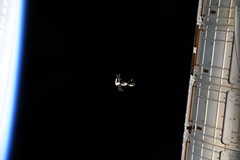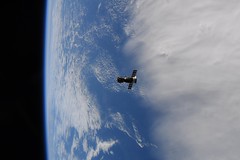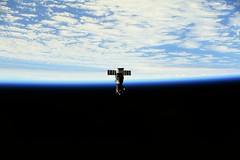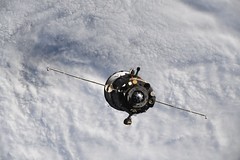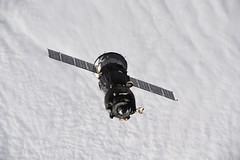Bye bye Soyuz
lundi 18 octobre 2021 à 09:09Thomas Pesquet posted a photo:
À une prochaine fois Oleg, Yulia et Klim, aucun doute : on se recroisera sur Terre ! Piotr et Mark restent à bord avec nous, avec sans doute une impression étrange aujourd’hui de voir leur ancien vaisseau partir sans eux ! Ils redescendront sur Terre dans 6 mois à bord du Soyouz MS-19 avec lequel Anton est arrivé. Le Soyuz, comme toute capsule spatiale, est certifié pouvoir rester un certain temps en orbite, car certains équipements fonctionnent en permanence, et s’usent petit à petit… comme sur une voiture, un avion ou n’importe quel véhicule, rien ne peut fonctionner indéfiniment, surtout en environnement extrême. Après un peu plus de 200 jours, il faut redescendre sur terre, d’où les rotations régulières (et parfois le changement de véhicule à la montée et la descente comme ici : on laisse le véhicule le plus récent et on redescend avec le plus ancient). Et oui, c’est pareil avec le Dragon. Seule l’ISS ne redescend jamais, et c’est une prouesse technique de l’entretenir in-situ
The Soyuz MS-18 leaving with Oleg, Yulia and Klim. Mark and Pyotr are still here with us even if they travelled with the Soyuz MS-18 "Yuri Gagarin" that left this morning to get here. It must be a weird feeling to see your spacecraft leave! They return home in the Soyuz MS-19 that arrived with Anton, a fresh spacecraft. The Soyuz, like all spacecraft, is certified to stay a number of days in orbit. Equipment suffers from natural wear and tear and like a car, or aircraft nothing can work indefinitely, especially in extreme environment like space. After around 200 days the Soyuz must return to Earth, this is why we have regular rotations (and why sometimes people arrive on a spacecraft and return on another one like today: we leave the more recent spacecraft and take the older one back home). It is the same for the Dragon. Only the International Space Station never returns, and it is through technical prowess from the engineers on Earth that we are able to maintain it while in orbit!
Credits: ESA/NASA–T. Pesquet
608G3224
